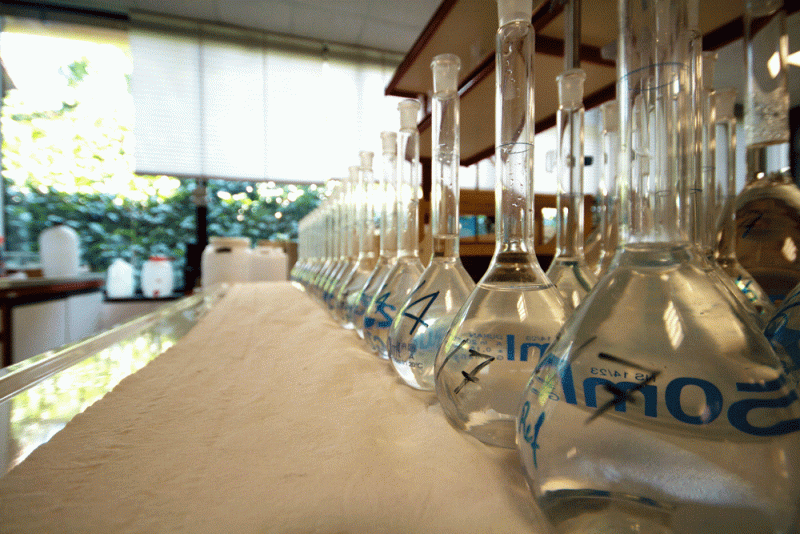
It is well known that formaldehyde is one of the ingredients by which amino resins are produced (urea-formaldehyde in particular) and it is also known that the materials that contain such resins, like wood based panels, are consequently subject to specific controls to verify the emission of this substance.
It is certainly less known that
other types of adhesives, such as vinyl, may also contain formaldehyde in discrete quantities. In these cases, formaldehyde may have been added as a preservative or it may result, as a by-product, from polymerization reactions of the same resin or in consequence of the self-crosslinking mechanisms involving certain types of water-resistant adhesives.
Following the changed classification of formaldehyde as a carcinogen substance and the consequent large number of requests received by our laboratory, CATAS is now able to provide an additional service that will expand the already extensive analytical offer for the determination of this substance.
In addition to the tests to determine the emission from wood-based panels, the chemical department can perform the analysis of free formaldehyde present in various formulations like resins, adhesives and coatings.
We are therefore able to provide the analytical results of
free formaldehyde content in polymer dispersions according to ISO 15373 (Plastics-Polymer dispersions-Determination of free formaldehyde).
The method is applicable to acrylic dispersions, polyvinyl acetate (PVAc), acrylonitrile-butadiene, styrene-butadiene carboxylate and other possible compositions.
The market is showing an increasing attention to this parameter, and even the world's largest furniture distributor recently introduced a specific requirement in its specifications for the determination of free formaldehyde according to this method.
To request any clarification or simply a quotation for this analysis you can directly contact the Catas Chemical Department.
For info:Stefano Ciroi
tel. +39 0432 747236
e-mail
stefano.ciroi@catas.com

 It is well known that formaldehyde is one of the ingredients by which amino resins are produced (urea-formaldehyde in particular) and it is also known that the materials that contain such resins, like wood based panels, are consequently subject to specific controls to verify the emission of this substance.
It is well known that formaldehyde is one of the ingredients by which amino resins are produced (urea-formaldehyde in particular) and it is also known that the materials that contain such resins, like wood based panels, are consequently subject to specific controls to verify the emission of this substance.